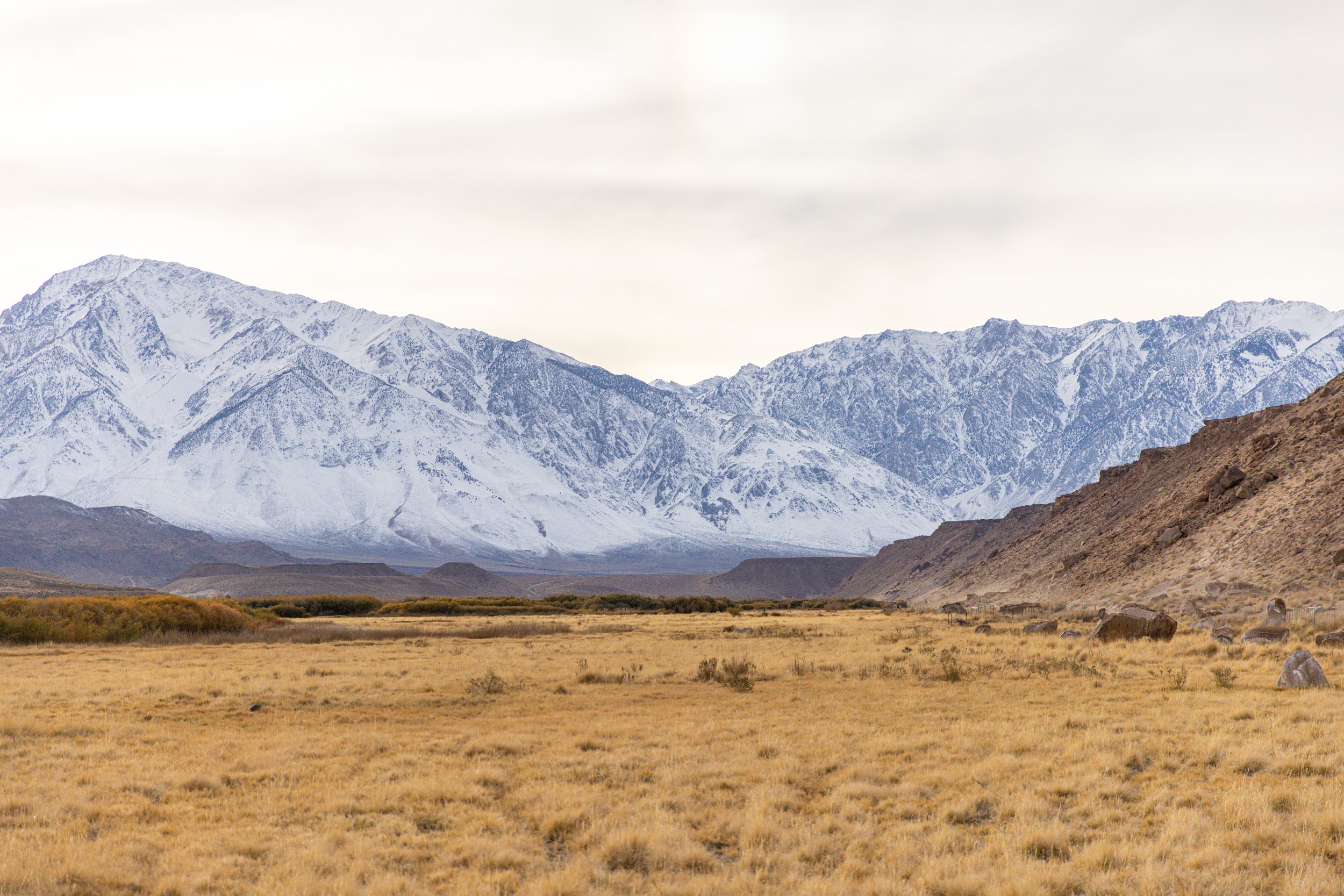We all know the long-term impacts. But what about the here and now?
We know our climate is changing, and that we all have a role to play in demanding climate action. But climbers also need to be aware of the short-term impacts of climate change that can affect the climbing experience in the here and now.
Bishop, California. Nüümü, Newe Sogobia, and Nüümü Witü. © April Herrera.
1. Worsening wildfires are burning climbing areas.
Wildfires leave dangerous conditions and access issues in their wake. Climbers may encounter compromised fixed hardware, changes in rock quality, burned-out trees that can fall at any moment, and other hazards. For these reasons, land managers often close burned areas to help them recover. This loss of access can be frustrating, but climbers must respect these closures to give crags and communities time to recover.
2. Rising temperatures are shortening climbing seasons.
As temperatures rise, climbers will face more dangerously hot days. Changing temperature patterns can and will catch climbers off guard. Prepare in advance to address heat exhaustion, severe dehydration, and other risks. You can prevent most heat-related illness by staying hydrated, carrying plenty of water, and knowing the symptoms of these conditions so you can recognize them and react swiftly.
3. Storms and floods erode trails, roads, and belay areas.
Extreme weather events erode the infrastructure that climbers rely on. Severely washed-out roads are being closed to the public until repaired. Eroding hillsides compromise approach trails. Belay areas with exposed roots and rocks present a hazard to climbers and are challenging to restore. Be aware of changes in road and trail conditions before heading to the crag—especially after extreme weather events.
4. Melting glaciers and ice make mountains more dangerous.
Alpine climbers and mountaineers rely on glaciers, ice, and snow for safe travel through the mountains. As the window of predictable snow and ice conditions changes, climbers will find themselves in dangerous situations when once-reliable conditions become unpredictable. Be ready to adapt to unforeseen conditions—for example, traversing ice instead of expected snow or climbing through a section of loose rock that was once reliably stable.
5. Shrinking habitats are pushing plants and animals to the brink.
As habitats change, new closures may be necessary to protect plants and wildlife, migration patterns, and fragile landscapes. Always respect closures at climbing areas—ignoring them can damage fragile ecosystems and put undue stress on climber-land manager relationships.
Know Before You Go
When it comes to climbing in the face of climate impacts, a little bit of research goes a long way. Here are three things every climber should consider before heading to the crag:
Take Closures Seriously: Whether it’s wildfire recovery, habitat rehabilitation, or wildlife protection, climbers must respect closures, even as they become more frequent and unpredictable.
Expect the Unexpected: Being prepared is more important than ever as the places we love to climb undergo changes. To stay safe, climbers must be ready to adapt quickly to changing conditions.
Connect with Local Climbing Organizations: Local climbing organizations are a great source of information about specific climbing areas. Check with the organization that covers the area you’re traveling to for need-to-know updates.


